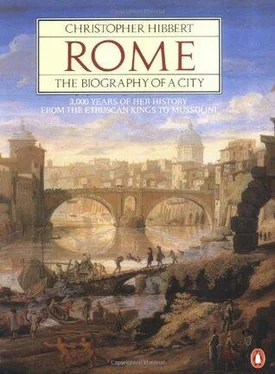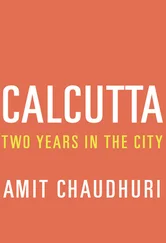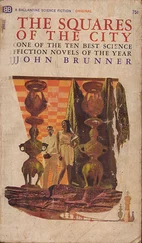Christopher Hibbert - Rome. The Biography of the City
Здесь есть возможность читать онлайн «Christopher Hibbert - Rome. The Biography of the City» весь текст электронной книги совершенно бесплатно (целиком полную версию без сокращений). В некоторых случаях можно слушать аудио, скачать через торрент в формате fb2 и присутствует краткое содержание. Жанр: Культурология, Искусство и Дизайн, на английском языке. Описание произведения, (предисловие) а так же отзывы посетителей доступны на портале библиотеки ЛибКат.
- Название:Rome. The Biography of the City
- Автор:
- Жанр:
- Год:неизвестен
- ISBN:нет данных
- Рейтинг книги:3 / 5. Голосов: 1
-
Избранное:Добавить в избранное
- Отзывы:
-
Ваша оценка:
- 60
- 1
- 2
- 3
- 4
- 5
Rome. The Biography of the City: краткое содержание, описание и аннотация
Предлагаем к чтению аннотацию, описание, краткое содержание или предисловие (зависит от того, что написал сам автор книги «Rome. The Biography of the City»). Если вы не нашли необходимую информацию о книге — напишите в комментариях, мы постараемся отыскать её.
Rome. The Biography of the City — читать онлайн бесплатно полную книгу (весь текст) целиком
Ниже представлен текст книги, разбитый по страницам. Система сохранения места последней прочитанной страницы, позволяет с удобством читать онлайн бесплатно книгу «Rome. The Biography of the City», без необходимости каждый раз заново искать на чём Вы остановились. Поставьте закладку, и сможете в любой момент перейти на страницу, на которой закончили чтение.
Интервал:
Закладка:
Back in Rome once more, Caesar had reappeared in the courts. He had become active in the College of Priests to which he had been elected in 81 B.C., and, after a time spent in the army as a junior officer, had come to the fore as a young aristocrat who, while proudly tracing his ancestry back through Romulus as far as the goddess Venus, had no patience with the unyielding conservatism of the established government. He had also, following the death of his first wife, married again, having carefully chosen a bride who could provide him with the ample wealth which was not only demanded by his extravagance and taste for luxury but which was still essential for the pursuit of high political office in Rome.
For the moment the great names in Rome remained Crassus and Pompey; and in order to promote his own ambitions, Caesar was prepared for the moment to further theirs. And so the three men rose together. In 65 B.C. Caesar was appointed Aedile, an office which, since it included responsibility for the provision of entertainments for the people of Rome, as well as for the maintenance of the city's buildings, gave its holder unrivalled opportunities to make himself popular. Eagerly seizing these opportunities, Caesar put on more spectacular circuses, wild beast shows and gladiatorial combats than Rome had ever witnessed before. From the office of Aedile, he quickly progressed to that of Pontifex Maximus, and in 62 B.C. to that of Praetor which took him to Spain where he showed himself to be as gifted a general as an orator and where he extracted so much money from defeated tribesmen that he was able not only to add to his own wealth and to gain the loyalty of his soldiers by lavish rewards but also to secure useful allies in Rome by sending part of the plunder home.
So, step by step, Caesar advanced to power, divorcing his second wife and marrying instead Calpurnia, daughter of a Senator soon to be Consul. The consulship was now almost within Caesar's own grasp. And, following merciless campaigns in Gaul and two invasions of Britain, which won him even greater renown and riches, he was ready to challenge Pompey for supreme power.
Caesar's other former colleague, Crassus, had already been killed in Mesopotamia; but the elimination of Pompey, by 52 B.C. sole Consul in Rome, was not so easily obtained. Caesar had thought at first of strengthening his alliance with him by suggesting that he should divorce Calpurnia and marry Pompey's daughter while pompey himself should marry a young relative of Caesar. Pompey chose, however, to marry the daughter of one of Rome's oldest and most distinguished families, the head of which he invited to share the consulship with him. And, after this, Caesar gradually came to the decision that was to lead him in 49 B.C., at the age of fifty-one, to take his army south across the Rubicon, the small stream between Ravenna and Rimini which divided Gaul south of the Alps from Italy, even though this meant defying Rome's law of treason which forbade a provincial governor to lead troops out of his territories. As he approached the Rubicon he said to his officers, ‘Even now we might draw back; but once across that little bridge, then the whole issue will be with the sword.’
So it was to be. At first there was little resistance as Caesar marched south through Italy. He was joined at Rimini by Gaius Scribonius Curio, an influential Tribune of the People from Rome, whose support he had bought by paying off his debts. He was also welcomed there by another Roman Tribune, the intelligent, strong and forthright Mark Antony. Together they marched on Rome, while Pompey retreated southwards into Campania, thence to Brindisi and across the Adriatic towards the Balkans to the place where the decisive battle between him and Caesar was to be fought.
Disappointed in his hopes of winning the support of Cicero who, disliking him intensely, went off to join Pompey, Caesar was also disappointed by the halfhearted reception accorded to him in Rome by the Senate. Although distrustful of Pompey, most of the senior Senators were equally suspicious of Caesar, particularly after he had appropriated the contents of the state treasury in the Temple of Saturn. But, with or without the concurrence of the old aristocracy, Caesar was determined to rule in Rome; and, since he could not become Consul, as elections for this office had to be supervised by the Senators who currently held the office, both of whom had left the city declaring their support of Pompey, he had himself created Dictator instead. Then, having done what he could to deal with the financial crisis in Rome precipitated by these disturbances, he set off to fight his rival.
Overwhelming Pompey's forces on the plain of Pharsalus, Caesar pursued him to Egypt where Pompey was murdered by officers of the boy King Ptolemy XIII who offered his head to Caesar as a peace offering upon his landing at Alexandria. Caesar was not, however, to be so easily persuaded to re-embark. He needed to raise money in Egypt, and he made up his mind not to leave until he had it. To remain, indeed, became not so much a necessity as a pleasure once he had met King Ptolemy's 21-year-old half-sister, the joint-ruler of the country, Cleopatra VII. Driven into exile by Ptolemy's regency council, she now returned secretly and was brought to see Caesar in the palace where he was staying in Alexandria, smuggled into his presence tied up in a sleeping-bag. Caesar was immediately enchanted by her, and she was intrigued by him. They became lovers, and she had a child whom she called Caesarion. This liaison with the young and captivating Cleopatra, whose beautiful voice was ‘like an instrument with many strings’, brought Caesar into conflict with the Egyptian army which supported Ptolemy XIII. But the army was defeated, Ptolemy was killed, Egypt became a client state, and Cleopatra was confirmed as queen, with her surviving half-brother, Ptolemy XIV, as joint sovereign for mere convention's sake. Then, after further victories in Asia Minor and in Africa, Caesar returned to Rome to celebrate his glorious successes in four Triumphs which eclipsed even the magnificence of those of his dead rival Pompey.
The immense cost of the spectacular Triumphs of Caesar, which were to be commemorated in the canvases of Mantegna, would have exhausted the fortunes of most other generals. But Caesar still had money to spare for more lasting celebrations of his victories, and he decided upon a complete reconstruction and enlargement of the Forum, 1that traditional meeting-place, the heart of all the public life of the city, the scene of speeches and elections, of funeral services and sacrifices to the gods, of Triumphs and religious processions, sometimes of executions and of gladiatorial combats, often of celebrations such as the banquet Caesar himself gave here in 45 B.C. to 22,000 guests. Not content with the reconstruction of the Forum, Caesar also spent huge sums of money upon the restoration of the meeting-place of the Senate, the Curia, 2upon building a new Rostra, 3or orators’ platform, at the Forum's Capitoline end, and upon the erection of the Basilica Julia 4to the south of the Via Sacra. 5
This magnificent Basilica was entirely faced with marble. Its central hall, marked out with squares for games, was surrounded by a gallery supported by thirty-six columns. Here the lawyers held their courts, and the Centumviri tried important suits in civil law. These drew crowds of spectators who showed a passionate interest in the legal processes and rhetorical flights of oratory with which they were conducted. The acoustics were notoriously bad: when the four ‘chambers’ into which the Centumviri were divided were all trying separate cases at the same time the confusion was appalling, and the noise made all the more tremendous by the supporters whom some advocates paid to accompany them to the Basilica in order to cheer at appropriate intervals. It sometimes happened that the speech of an advocate with a particularly strong voice would resound through the building so loudly that no other speakers could be heard; on one occasion, a powerful and moving plea delivered in the thunderous tones of Galerius Trachalus was vigorously applauded not only by the crowds of people in his own chamber but in all the others as well.
Читать дальшеИнтервал:
Закладка:
Похожие книги на «Rome. The Biography of the City»
Представляем Вашему вниманию похожие книги на «Rome. The Biography of the City» списком для выбора. Мы отобрали схожую по названию и смыслу литературу в надежде предоставить читателям больше вариантов отыскать новые, интересные, ещё непрочитанные произведения.
Обсуждение, отзывы о книге «Rome. The Biography of the City» и просто собственные мнения читателей. Оставьте ваши комментарии, напишите, что Вы думаете о произведении, его смысле или главных героях. Укажите что конкретно понравилось, а что нет, и почему Вы так считаете.












